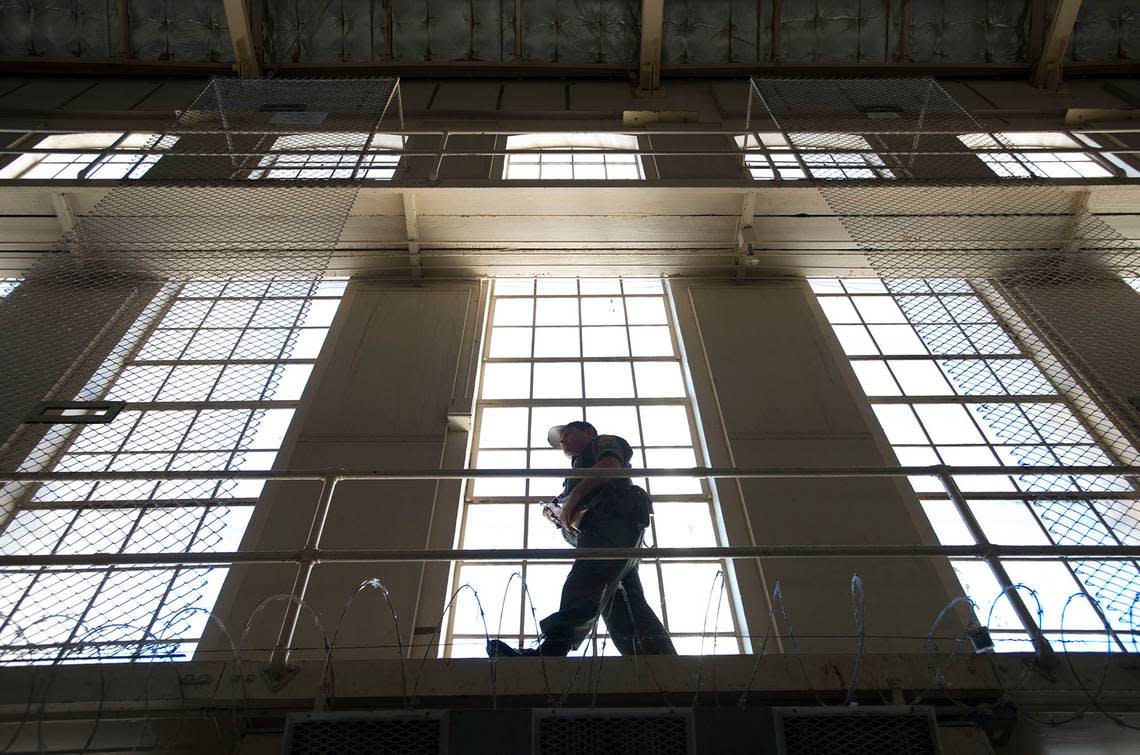It’s time to scale back the power of California’s prison-guards union | Opinion

The escalating United Auto Workers (UAW) strike is a historic moment for the labor movement nationwide. It’s also an opportunity to observe the contrast between unions and law enforcement special interest groups like the Correctional Peace Officers Association (CCPOA).
CCPOA is the “union” representing prison guards at the California Department of Corrections and Rehabilitation. In addition to being historically at odds with organized labor, its massive bargaining power stands in stark contrast with workers across diverse sectors currently rallying on picket lines. While many unions are having to fight to secure living wages for workers, CCPOA has secured a lavish deal with Gov. Newsom, snatching $1 billion in raises, perks and benefits for its members over the next three years. This eyebrow-raising agreement unfolds against a backdrop of stagnant wages for many Californians, including other state union workers, and underscores CCPOA’s long-standing, outsized influence in Sacramento.
Laborers advocating for equitable compensation, job stability, and ethical oversight of artificial intelligence (like those from the Hollywood writers’ strike, who appear to have reached a deal after nearly five months), as well as every other taxpayer in California, will shoulder the burden of Newsom’s sweetheart deal with CCPOA as the state grapples with a formidable $32 billion deficit.
CDCR has been complaining about “staffing shortages,” but the state’s own data call that into question. Everyone should have access to a well-paying job with good benefits, but the nonpartisan Legislative Analyst’s Office estimates that by 2027, the California state prison system could accumulate a surplus of 20,000 empty beds, or 20% excess capacity. For years, the Legislature has demanded a clear plan from CDCR to help right-size the state’s corrections budget, which it has been predictably slow to produce.
A Public Records Act request confirmed that CDCR has a unique opportunity to reduce costs and protect employment: approximately 3,743 eligible guards are on track for retirement, with a projected 10,430 more expected to follow over the next five years. With a little planning, CDCR should be able to recalibrate its staffing levels to align with the prison population reductions, all without resorting to layoffs.
The LAO affirms that as many as five additional prisons can be safely closed by 2027, or eight state prisons in total. Coalitions like Californians United for a Responsible Budget maintain that at least 10 state prisons should be announced for closure by 2025, which could save taxpayers at least $1.5 billion annually in operating costs. This money should be redirected toward expanding a more diverse workforce, nurturing stable public sector union jobs, and supporting Black and under-resourced communities — investments that have proven to increase public safety.
Poor planning by the state will make closing a prison more painful than necessary for rural economies. Susanville and Blythe, both towns with recent or upcoming prison closures, have a monolithic economy over-reliant on incarceration. Ensuring a just transition for workers navigating these shifting economic landscapes is an essential part of building a stronger California labor force. Initiatives such as the Community Economic Resilience Fund offer a workable model, and community organizations have put forward a compelling vision for a just transition toward a more sustainable economy.
California’s future requires an investment in high road, well-paying, green and unionized jobs. Our climate emergency demands a regenerative economic model that benefits both workers and the environment, providing organized labor with its best opportunity to thrive in the Golden State.
The resurgence of the labor movement is a wake-up call. Companies seeing record profits — and our state’s elected officials — must prioritize the interests of underpaid workers and invest in equitable economies that will effectively anchor a more prosperous future. That means prioritizing the financial stability of vulnerable Californians and curtailing the power of special interest groups like CCPOA that continue to raid the state’s dwindling coffers.
Brian Kaneda is the deputy director of Californians United for a Responsible Budget. Woods Ervin is the co-director of Critical Resistance.

